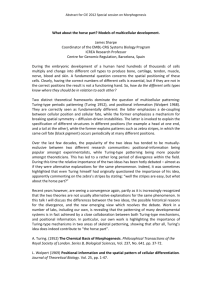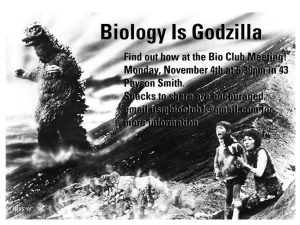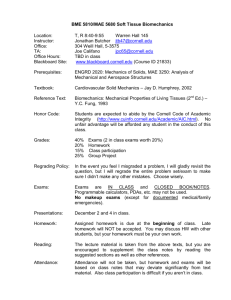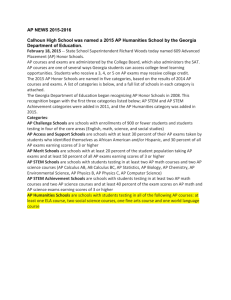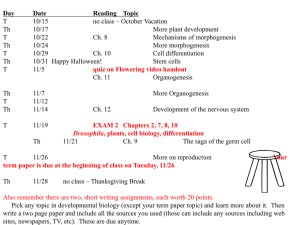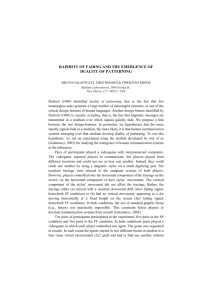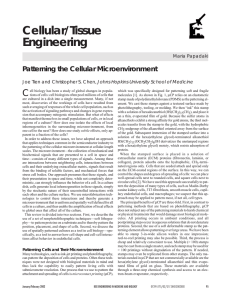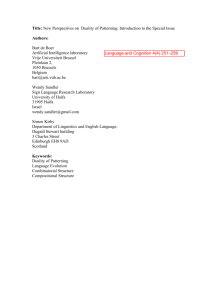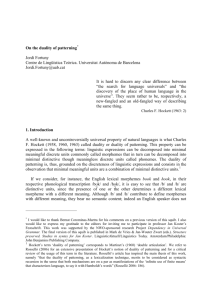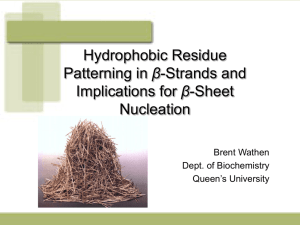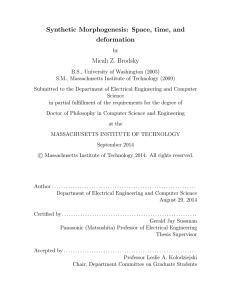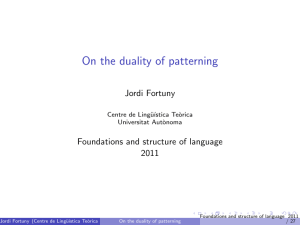Syllabus
advertisement
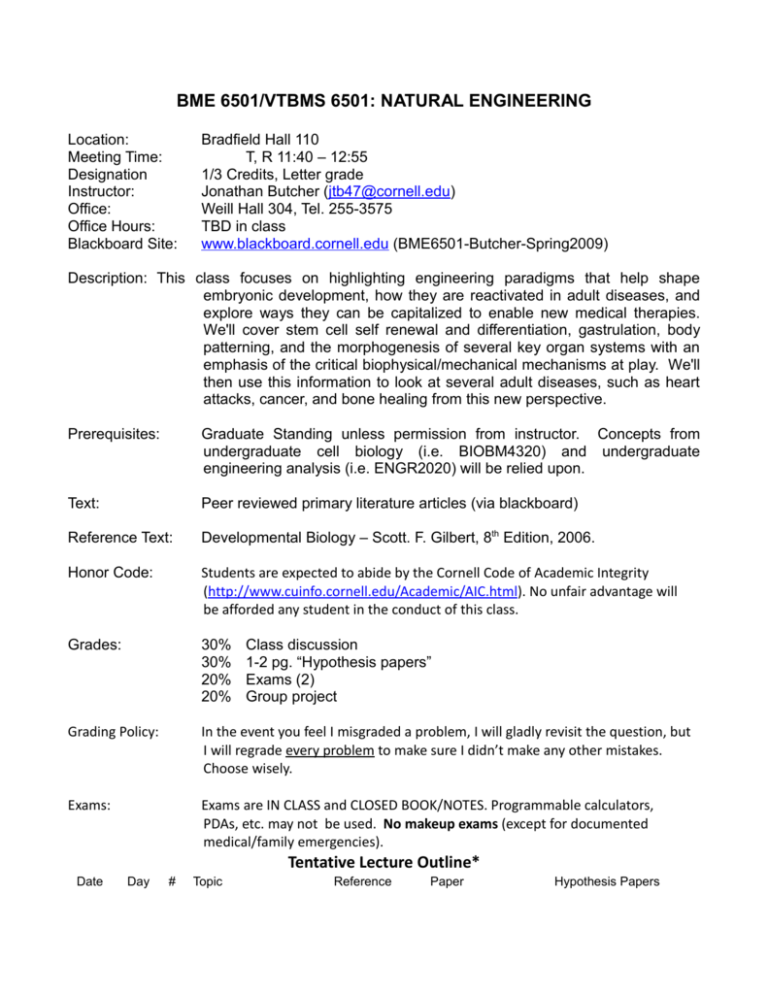
BME 6501/VTBMS 6501: NATURAL ENGINEERING Location: Meeting Time: Designation Instructor: Office: Office Hours: Blackboard Site: Bradfield Hall 110 T, R 11:40 – 12:55 1/3 Credits, Letter grade Jonathan Butcher (jtb47@cornell.edu) Weill Hall 304, Tel. 255-3575 TBD in class www.blackboard.cornell.edu (BME6501-Butcher-Spring2009) Description: This class focuses on highlighting engineering paradigms that help shape embryonic development, how they are reactivated in adult diseases, and explore ways they can be capitalized to enable new medical therapies. We'll cover stem cell self renewal and differentiation, gastrulation, body patterning, and the morphogenesis of several key organ systems with an emphasis of the critical biophysical/mechanical mechanisms at play. We'll then use this information to look at several adult diseases, such as heart attacks, cancer, and bone healing from this new perspective. Prerequisites: Graduate Standing unless permission from instructor. Concepts from undergraduate cell biology (i.e. BIOBM4320) and undergraduate engineering analysis (i.e. ENGR2020) will be relied upon. Text: Peer reviewed primary literature articles (via blackboard) Reference Text: Developmental Biology – Scott. F. Gilbert, 8th Edition, 2006. Honor Code: Students are expected to abide by the Cornell Code of Academic Integrity (http://www.cuinfo.cornell.edu/Academic/AIC.html). No unfair advantage will be afforded any student in the conduct of this class. Grades: 30% 30% 20% 20% Grading Policy: In the event you feel I misgraded a problem, I will gladly revisit the question, but I will regrade every problem to make sure I didn’t make any other mistakes. Choose wisely. Exams: Exams are IN CLASS and CLOSED BOOK/NOTES. Programmable calculators, PDAs, etc. may not be used. No makeup exams (except for documented medical/family emergencies). Class discussion 1-2 pg. “Hypothesis papers” Exams (2) Group project Tentative Lecture Outline* Date Day # Topic Reference Paper Hypothesis Papers 20-Jan T 1 Overview 22-Jan 27-Jan R T 2 3 Cleavage Cell specification Embryonic stem cells and cloning Somatic stem cells 29-Jan 3-Feb R T 4 5 5-Feb 10-Feb R T 6 12-Feb R 7 17-Feb T 8 19-Feb R 9 24-Feb T 10 26-Feb R 11 3-Mar T 5-Mar R 10-Mar T 12-Mar 17-Mar R T 19-Mar 24-Mar 26-Mar 31-Mar 2-Apr 7-Apr 9-Apr 14-Apr 16-Apr R T R T R T R T R 15 16 17 18 19 20 21 22 21-Apr 23-Apr T R 23 24 NO CLASS Neural Crest Mesoderm Derivatives Limb Development Growth Plates Heart Development I Heart Development II Vasculogenesis Angiogenesis Evolution and Regeneration Cancer 28-Apr T 25 Tissue Engineering 30-Apr R 26 Exam II 292-294, 327329, 336-337, 348-349 p55-62 p684-687 p157, 687-688 Grill 2001 Engler Cell 2006 Schenkye-Layalnd 2008 Ebihara 2006 Experimental Methods NO CLASS Gastrulation/Axis Patterning Morphogens and Fields Biomathematical Patterning Ch 3-5 Utomo 1999 297-302, 322333, 329-366 Zamir 2006 p63-67 Lo 2004 p19-24 Meinhardt website p67-74 Jakab 2004 Ch 6 Ninomiya 2007 12 Cell Adhesion Morphogenesis I Creation Morphogenesis II Destruction p158-160 Toyama 2008 13 Systems Biology Ch 12, 13 Lamoreux 2002 Ch14 Ch 16 Moore 2006 Carter 1998 Ch 15 Ch 15 480-493 485-488 Butcher 2007 Bones and Valves Gentile 2008 Sieminski 2004 Stem cells: friend or foe? Chicken or the Egg? Exam I 14 Ectoderm Derivatives NO CLASS *NOTE: Subject to change based on student interest. Patterning the patterns? Flow or Beating? Why can't we regenerate? Beachy 2004
